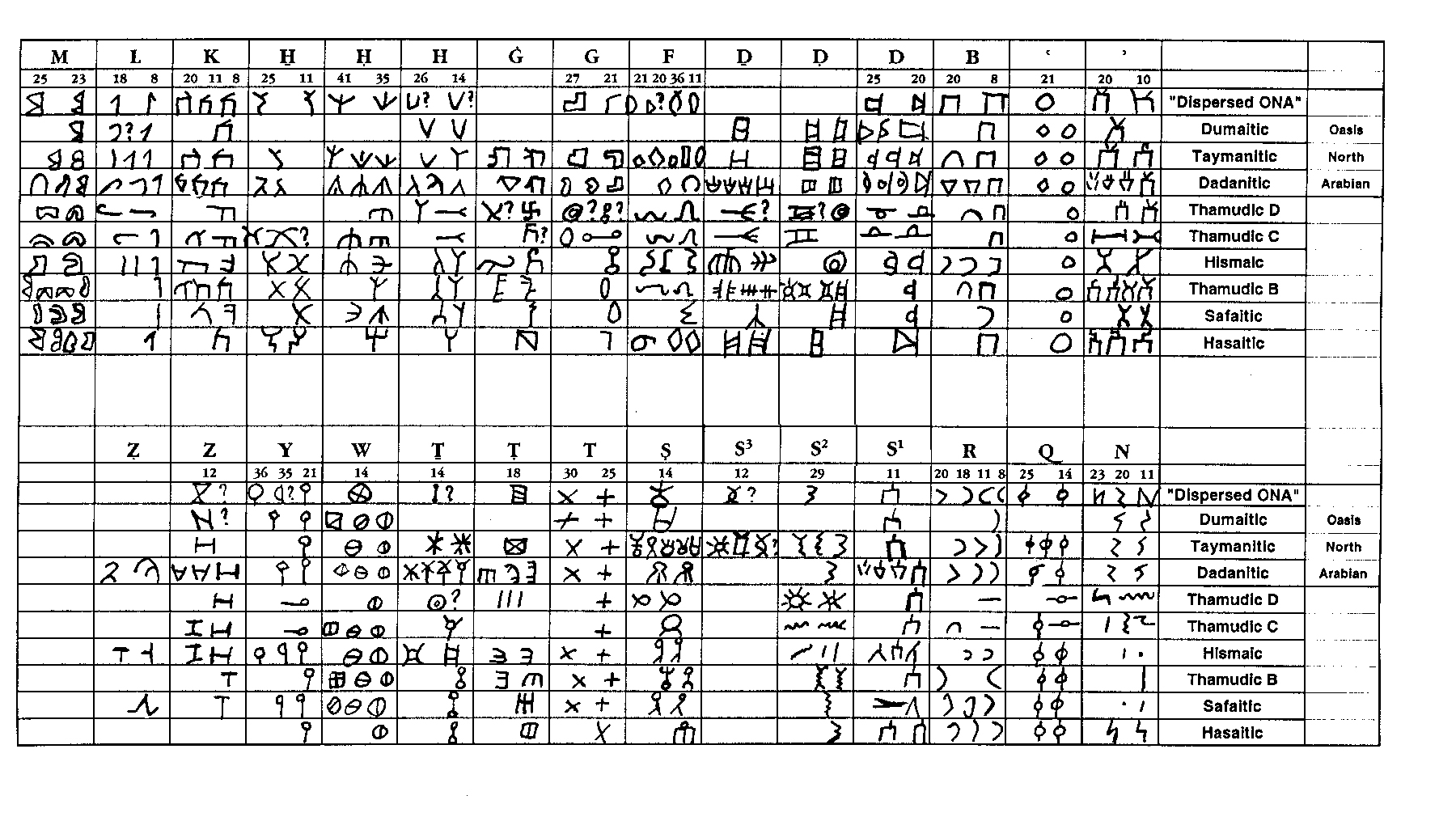Ancient North Arabian
‘Ancient North Arabian’ [ANA] is the name given to a group of scripts used in ancient North Arabia, Jordan, southern Syria, and occasionally elsewhere. It belongs to the South Semitic script family, which also includes the Ancient South Arabian alphabets (musnad and zabūr) and the vocalized scripts used in Ethiopia for Geʿez, Amharic, etc. Ancient North Arabian is a negatively defined category, covering all non-Ancient South Arabian reflexes of the South Semitic script. Whether these distinct alphabets form a genetic cluster to the exclusion of Ancient South Arabian or are in various ways parallel and independent developments from a common proto-script is so far unclear.
The ANA scripts were used both in the oases (Dadanitic, Dumaitic, Taymanitic,) and by the nomads (Hismaic, Safaitic, Thamudic B, C, D, and Himaitic/Thamudic F). There are several hundred formal inscriptions and tens of thousands of graffiti in these scripts which were used from the early first millennium BC to perhaps as late as the 5th century AD. See the descriptions of the individual scripts below. You can also see a comparison of the letter forms used in each script in the following table. Note that this table reflects the state of the art in the late 20th century. Much progress has been made in the understanding of the Thamudic scripts over the last two decades, as well as the inclusion of a new category, namely, Himaitic (Thamudic F), and so a new comparative script chart is under development.

